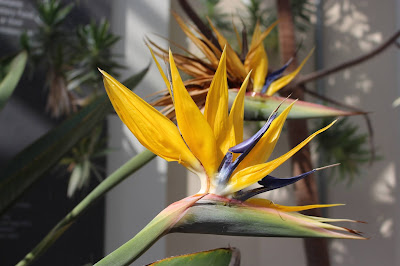In the tropical house at Kew there are plants from around the world grown from seeds brought back from remote locations by enterprising botanists; many of whom would give Indiana Jones a run for his money in the derring-do stakes. Among these, the Bird of Paradise plant gets plenty of attention. So called because the flower heads resemble those of birds, Strelitzia Reginae were first seen at Kew as far back as 1773. Joseph Banks, the pioneering botanist, described the plant in its natural habitat in South Africa.
On our visit at the end of May there was a fine display of flowers in the Tropical House, pictures of which are shown below:
The stories behind the plants at Kew are as interesting as those behind objects in the British Museum. There is light and shade to be found in them, but, in the case of Kew, the potential exists to send seeds and plants back to their place of origin. Kew is a safety deposit box for many plant species around the world and has the potential to become even more important in the future. In the meantime, these flowers can delight the eye and engage the mind.
Follow the links below for my other Kew Posts:



No comments:
Post a Comment